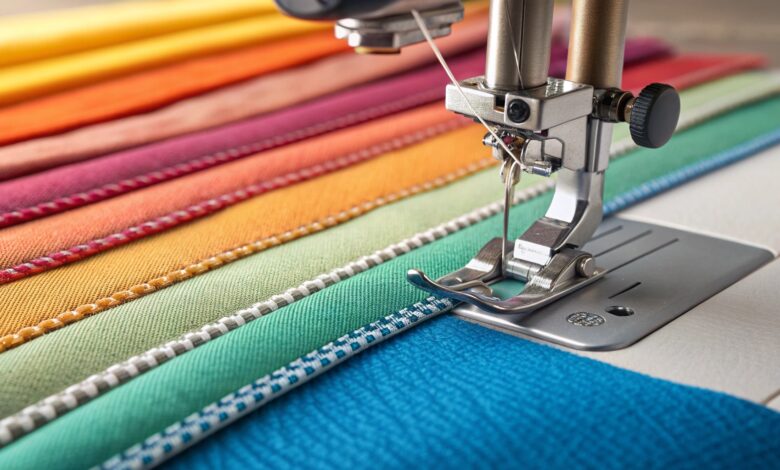Nahttypen: Understanding Different Types of Stitches

Nahttypen: Understanding Different Types of Stitches explores the variety of sewing stitches used in fashion, upholstery, and fabric design. This guide breaks down how each stitch type serves a unique purpose in strength, flexibility, and appearance. Whether for beginners or professionals, learning Nahttypen improves sewing accuracy and creativity. The article highlights common and advanced stitching methods for better garment construction. It simplifies complex sewing terms into easy explanations for practical use. Discover how understanding Nahttypen enhances precision and craftsmanship in every sewing project.
Stay tuned with us — we will talk about Nahttypen: Understanding Different Types of Stitches. Join us to learn how different stitch types can transform sewing quality and creativity for professionals and hobbyists alike.
Introduction to Nahttypen
Nahttypen, translated from German as “types of seams” or “types of stitches,” refers to the different sewing methods used to join fabrics. In the sewing and textile industry, understanding these stitch variations is essential for durability, function, and aesthetic appeal. Each stitch type serves a specific role, whether it’s for strength, elasticity, or decorative effect. From hand stitching to industrial machine seams, Nahttypen forms the foundation of modern garment construction and textile design.
The Importance of Choosing the Right Stitch
Selecting the right Nahttypen determines the overall quality of a product. Using the wrong stitch can lead to weak seams, puckering, or poor fit. Professional designers and tailors consider fabric type, garment use, and stretch requirements before choosing the right seam. In home sewing, understanding Nahttypen allows enthusiasts to improve craftsmanship, avoid fabric damage, and achieve a professional look.
Common Nahttypen Used in Everyday Sewing
Straight Stitch
The most basic and widely used seam, a straight stitch joins two fabric pieces with clean precision. It’s ideal for woven fabrics and is often the foundation for clothing and home décor items.
Zigzag Stitch
This flexible stitch prevents fraying and adds elasticity to fabrics like knits or stretch materials. It’s perfect for finishing raw edges and reinforcing stress points.
Overlock Stitch
Used mainly in professional and industrial settings, the overlock stitch trims excess fabric while sewing, creating clean, durable edges.
Blind Hem Stitch
This type of stitch hides thread lines on hems, making it ideal for dress pants, skirts, and formal wear.
Flat-Felled Stitch
Known for its strength, this stitch type is often found in denim jeans and uniforms. It locks fabric layers securely with no raw edges visible.
Specialized Nahttypen for Professional Use
Certain stitch types serve specialized purposes beyond everyday sewing.
- Chain Stitch: Common in decorative embroidery and stretch garments.
- Cover Stitch: Used in activewear and knitwear to allow flexibility.
- Topstitch: Adds a polished, visible line for both strength and design detail.
- Lock Stitch: Ensures a tight, durable finish by interlocking threads.
These advanced stitches are essential for high-quality clothing, upholstery, and even technical fabrics.
How Nahttypen Vary by Fabric Type
Different fabrics require different Nahttypen.
| Fabric Type | Recommended Nahttypen | Purpose |
| Cotton | Straight or Topstitch | Clean and structured seams |
| Denim | Flat-Felled or Double Stitch | Strength and durability |
| Knit | Zigzag or Overlock | Stretch and flexibility |
| Silk | French Seam | Smooth finish and elegance |
| Linen | Reinforced Seam | Longevity and stability |
This table shows how fabric properties influence the right stitching method, ensuring optimal results.
Tools and Techniques for Perfect Nahttypen
Achieving the best stitch quality depends on proper tools and techniques. Using a sharp needle, the correct thread weight, and the right machine tension all affect the outcome. For delicate fabrics, lightweight threads and small needles are ideal. For heavy materials like canvas or denim, strong polyester threads and larger needles work best. Practicing tension control and adjusting stitch length ensures clean, even seams without puckering.
Creative and Decorative Nahttypen
While many stitches are functional, others serve aesthetic purposes.
Embroidery Stitches
Used to add artistic patterns, embroidery stitches enhance beauty and individuality.
Decorative Topstitches
These stitches outline design lines, pockets, and collars to give garments a professional finish.
Smocking and Decorative Seams
Used in luxury fashion and crafts, these stitches combine functionality with artistry, turning seams into design elements.
Maintaining Seam Quality Over Time
Proper care ensures that seams remain strong and visually appealing. Regular inspection helps identify loose threads or weak areas early. Washing clothes in gentle cycles and avoiding excessive heat preserve seam integrity. For long-term use, reinforced stitches should be used on stress areas like shoulders, waistlines, and cuffs. A little preventive maintenance ensures that every Nahttypen holds up under wear and tear.
Modern Innovations in Nahttypen
Technology has revolutionized the way seams are created. Modern sewing machines come with computerized settings for precision stitching. Automatic tension adjustments, programmable patterns, and digital sensors make even complex stitches accessible to beginners. In the industrial field, automated seam-sealing and ultrasonic stitching are replacing traditional thread-based seams. These innovations make Nahttypen more efficient, precise, and sustainable for the future of textile manufacturing.
Conclusion
Nahttypen encompasses more than simple stitching—it represents the craftsmanship behind every fabric creation. By understanding the different types of stitches, sewists can elevate both durability and design. From classic straight seams to decorative embroidery, each stitch serves a purpose that contributes to the garment’s structure and beauty. The right Nahttypen ensures fabric longevity, better comfort, and a professional appearance. Advances in sewing technology continue to expand the creative possibilities of stitching. Whether for fashion, home décor, or industrial use, mastering these techniques makes every project stronger and more beautiful. In essence, Nahttypen connects creativity with precision, forming the foundation of quality textile work worldwide.
FAQs
What does Nahttypen mean?
Nahttypen is a German term that means “types of seams” or “types of stitches” used in sewing and textile work.
Why are different stitch types important?
Each stitch type serves a unique function, offering varying levels of strength, flexibility, and visual style.
Which stitch type is best for denim?
The flat-felled stitch is best for denim because it’s strong and prevents fraying.
Can beginners learn Nahttypen easily?
Yes, beginners can start with basic stitches like straight and zigzag before exploring advanced seam types.
How is technology changing Nahttypen?
Modern machines now offer computerized precision and innovative techniques like ultrasonic stitching for advanced applications.




